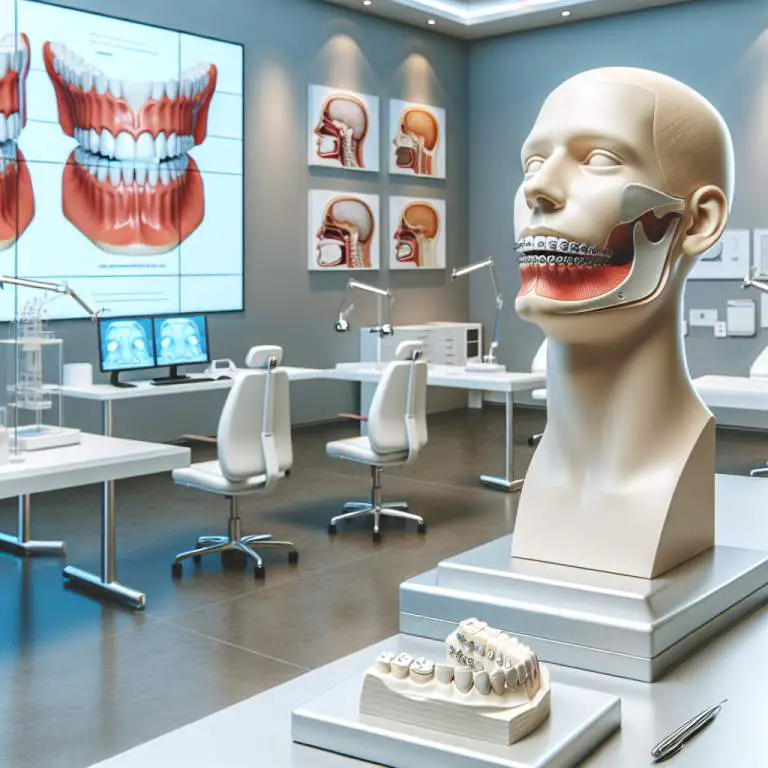How to start mewing for complete beginners?
To start mewing as a complete beginner, first, close your mouth and bring your teeth gently together. Next, place the entire surface of your tongue against the roof of your mouth, including the back part. Remember to breathe through your nose while keeping your tongue in this position. Practice holding this posture as much as you can throughout the day for effective results.

How does mewing work and what are its purported benefits?
Mewing is a technique that involves placing your tongue against the roof of your mouth. This position is supposed to help with a lot of things. People say it can make your jawline look better and even help you breathe easier.
When you practice mewing, you’re training the muscles in your face and neck. Over time, this might change how your face looks. Some folks also believe it can fix problems with how your teeth fit together or improve your posture.
What is the correct tongue posture for mewing?
The right way to place your tongue for mewing is pretty simple but needs a bit of practice. Your entire tongue should be pressed against the roof of your mouth. The tip of your tongue should be just behind your upper front teeth.
Make sure not to push too hard or cause any pain. It’s important to keep this position as much as you can during the day, especially when swallowing. This helps train your muscles to hold the posture naturally.
Are there any risks or potential side effects associated with mewing?
Even though mewing sounds safe because it’s just about changing how you hold your tongue, there could be some risks. If done wrong, it might lead to jaw pain or discomfort. There’s also a chance it could mess with how your teeth line up if you put too much pressure on them.
Besides, experts haven’t fully agreed on whether mewing works or if it’s totally safe for everyone. So, if someone decides to try it, they should be careful and maybe talk to a doctor or dentist first if they have concerns.
How can beginners ensure they are mewing correctly?
If you’re new to mewing and want to make sure you’re doing it right, start by paying close attention to where your tongue is in your mouth. Practice getting the whole tongue up against the roof and keeping it there without straining too much.
A good tip is to say the word “sing,” and notice where the end of the “ng” sound places your tongue – that’s close to where it should be for mewing. Remember, consistency is key; keep practicing until it feels natural. And don’t hesitate to seek advice from professionals if you’re unsure about anything.
| Step | Description |
|---|---|
| 1. Understand the Concept | Learn what mewing is: a technique that involves proper tongue posture to potentially improve facial structure and breathing. |
| 2. Find Your Tongue’s Resting Position | Your tongue should rest completely against the roof of your mouth, not just the tip. |
| 3. Practice Proper Swallowing | The back of your tongue should lead the swallowing process, ensuring it remains in contact with the roof of your mouth throughout. |
| 4. Breathe Through Your Nose | Mewing encourages nasal breathing, which supports the correct tongue posture and overall health. |
| 5. Maintain Correct Head Posture | Align your head so that your ears are over your shoulders to support effective mewing practice. |
| 6. Be Consistent | Mewing requires continuous effort and consistency for potential benefits to manifest. |
| 7. Monitor Progress and Adjustments | Note any changes or improvements in facial structure or breathing patterns, adjusting techniques as necessary. |
| Note: Always consult with a professional before starting new health practices. | |
How long does it take to see results from mewing?
Seeing results from mewing can vary greatly from person to person. Some individuals may notice changes within a few months, while others might need to practice consistently for a year or more. The key factor is consistency in maintaining proper tongue posture.
It’s important to manage expectations when starting mewing. Immediate changes are unlikely because the process of reshaping and repositioning the facial structure is gradual. Patience and persistence are crucial for those looking to achieve noticeable results.
Can mewing improve facial aesthetics in adults, or is it more effective in younger individuals?
Mewing can potentially improve facial aesthetics in both adults and younger individuals, but the effects might be more pronounced in the latter group. Younger people have bones that are still growing and can be more easily influenced by changes in muscle posture, including those achieved through mewing.
In adults, while significant bone growth may not occur, improvements in muscle tone and posture can still lead to aesthetic enhancements. However, adults should temper their expectations and understand that changes may be subtler and take longer to appear compared to younger practitioners.
What additional exercises or practices can complement mewing for better results?
To complement mewing and potentially accelerate its benefits, incorporating jaw exercises and proper chewing habits can be beneficial. Chewing gum or practicing jaw exercises helps strengthen the muscles around the jawline, which can enhance the effects of mewing.
Additionally, maintaining overall good posture is essential. A straight spine aligns with the correct tongue posture encouraged by mewing, promoting better breathing patterns and contributing to an improved aesthetic appearance over time.
Final Thoughts
Mewing presents an intriguing approach to improving facial structure through non-invasive means. While individual results may vary, consistent practice combined with complementary exercises offers a pathway toward enhanced facial aesthetics.
As with any self-improvement technique, it’s important for individuals to approach mewing with realistic expectations and patience. Over time, with dedication and proper practice, positive changes are possible.







